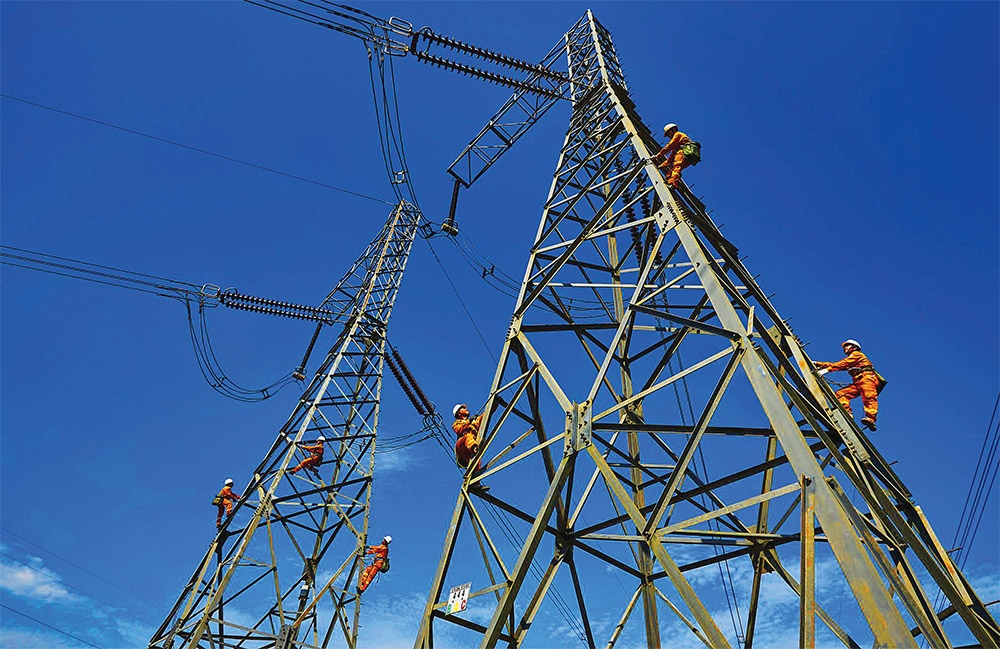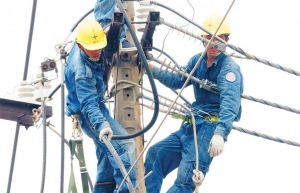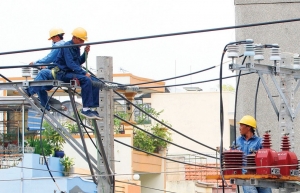Limited supply poses a risk of electricity shortages
There is tremendous urgency to guarantee a reliable electricity supply this year. The Ministry of Industry and Trade (MoIT) mandated two weeks ago that Vietnam Electricity (EVN) submit the electricity assurance plan for the national power system by March 15. The plan must detail strategies for supplying fuel to thermal power plants, with a particular focus on the northern region during the dry season’s peak months in 2024.
 |
| Supply of power looks precarious for 2024 |
The north could lack 1,200–2,500MW from late May to July, according to the general superintendent of Northern Power Corporation (NPC), Nguyen Duc Thien.
“The corporation has devised two power supply scenarios to prevent a recurrence of power shortages similar to the one that occurred in the summer of 2023. In doing so, the group was compelled to decrease its load capacity by approximately 3,952MW, which is equivalent to a reduction in output of 608 million kWh,” Thien said.
The NPC provides electricity for major industrial sites and manufacturers, with a concentration in the provinces of Nghe An, Hung Yen, Bac Giang, Phu Tho, Quang Ninh, Thai Nguyen, Nam Dinh, Thanh Hoa, and Vinh Phuc.
Importing electricity from China is part of the NPC’s strategy to ensure the north has an adequate power supply this year. Thien disclosed that the organisation intends to procure electricity from two different sources in China.
EVN is preparing power sources for a high development scenario in which the electricity growth rate is 9.4–9.8 per cent and GDP increases by 6–6.5 per cent.
The general director of EVN, Nguyen Anh Tuan, is apprehensive that alterations in the source structure could potentially introduce hazards and repercussions to the power supply strategy in 2024.
“At present, EVN possesses a mere 37.2 per cent of the overall power capacity, while PetroVietnam and Vinacomin each own roughly 10 per cent. The remaining capacity is under the ownership of the private sector,” Tuan said. “The overall system capacity has been recorded at 80,556MW in 2023. However, actual mobilisation is considerably lower, and the power reserve is also quite limited.”
The escalating expense of procuring electricity contributes to further complications for the power source. At present, market prices account for an exclusive 45 per cent of electricity production, with the cost of renewable energy being equivalent to the production expenses of EVN. The mean cost of electricity purchased by EVN is 8.6 US cents per kilowatt-hour, whereas the electricity is sold for approximately 8 US cents per kWh. This forces EVN to sell its electricity at a loss of 0.6 US cents per kWh.
EVN’s accumulated losses exhibit a persistent upward trend in 2023, notwithstanding the implementation of two price adjustments for electricity – a 3 and 4.5 per cent increase, respectively.
Tuan verified that the group’s financial situation “is insufficient to cover the costs of electricity production.” The aggregate cost of electricity generation, transmission, and distribution amounts to approximately 8.6 US cents per kWh. However, the prevailing average retail electricity price of merely 8 cents per kWh results in an accumulated loss for the group for the second year in a row.
In early December, EVN submitted a report to the MoIT disclosing its financial setbacks for 2023, which amounted to an estimated $696 million. Of this amount, EVN alone incurred a loss of just over $1 billion. This group incurred a similar loss in 2022 due to electricity production, trading, and other associated activities.
“Fundamental deficiencies within the electricity price mechanism are imposing economic strains on the group. We will be unable to achieve financial equilibrium if the practice of selling at a loss persists,” Tuan said. “We advise the MoIT to expeditiously present amendments and supplements to EVN’s regulations for governmental approval, along with the policy of importing electricity sources into Laos.”
| The MoIT has issued Decision No.3376/QD-BCT authorising the electricity supply plan for April through to July 2024, the high months of the drought season. The ministry approved the plan to provide operational backup in response to EVN’s request, ensuring power supply for the national power system. During the peak months of the dry season in 2024, the entire nation will import 109.183 billion kWh of electricity produced by power plants at generator terminals. |
 | Electricity plans take shape for 2024 The government is being urged to improve the supply of electricity for production and business activities, with warnings that power shortages could continue undermining the economy’s efforts to garner new funding from abroad. |
 | MoIT to counteract rising electricity costs The Ministry of Industry and Trade has suggested a three-month adjustment to the average price of electricity, instead of every six months as currently. |
What the stars mean:
★ Poor ★ ★ Promising ★★★ Good ★★★★ Very good ★★★★★ Exceptional
Related Contents
Latest News
More News
- CME Solar strengthens position in Vietnamese renewables (December 30, 2025 | 11:21)
- Self-care signals shift towards sustainable healthcare (December 30, 2025 | 10:12)
- GreenYellow marks five years of clean energy growth in Vietnam (December 26, 2025 | 15:51)
- TCP Group partner with VNUS to launch water conservation project (December 25, 2025 | 14:00)
- Heavy industries set for pilot greenhouse gas quotas (December 25, 2025 | 10:00)
- Swedfund invests in MSME growth and climate action in Vietnam (December 19, 2025 | 11:42)
- GreenYellow brings solar energy to light up remote schools in Tuyen Quang province (December 19, 2025 | 08:00)
- Charge+, Grab partner to develop EV charging network in Vietnam (December 18, 2025 | 17:11)
- Linking sci-tech and innovation to Vietnam’s net-zero future (December 18, 2025 | 14:31)
- Driving double-digit growth through green and circular transformation in Vietnam (December 17, 2025 | 09:00)

 Tag:
Tag:
















 Mobile Version
Mobile Version